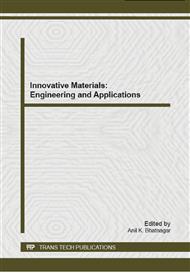p.120
p.127
p.132
p.137
p.143
p.149
p.155
p.163
p.169
Dielectric Strength of Flame-Retardant Reinforced Polyamides at High Temperature
Abstract:
The dielectric strength of halogen-free glass-reinforced polyamides, including PA6, PA66, PA66/6T and PPA has been evaluated in severe conditions i.e. 120°C and 140°C according to IEC60243-1. A few halogenated grades have been evaluated as well for comparison purposes. The influence of the type of flame retardant is discussed, and results in terms of dielectric strength retention at high temperature are compared with electrical Relative Thermal Index RTI and the compound melting temperature.
Info:
Periodical:
Pages:
143-148
Citation:
Online since:
October 2014
Authors:
Price:
Сopyright:
© 2014 Trans Tech Publications Ltd. All Rights Reserved
Share:
Citation:


